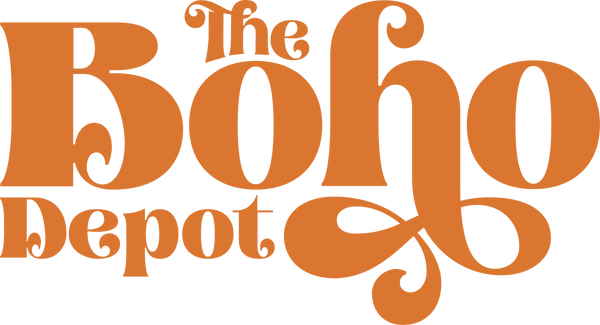Have you ever wondered where the mesmerizing flow of bohemian dresses, feathered accessories, and flower crowns originated? The boho style, a short form for 'bohemian,' is not just a fashion statement but an entire culture in itself. Rooted in unconventional lifestyles and artistic expression, boho style is the child of countercultural movements and artistry from bygone eras. But, how did this hippie fashion, once a rebellious statement, become a global trend loved by fashionistas and free spirits alike? Let's take a look.
The History of Boho Style: How Hippie Fashion Became a Global Trend
Boho style didn't just pop up overnight. Its history is woven from various eras, communities, and artistic movements.
From Bohemians to Boho: An Origin Story
Bohemians were originally artists, writers, and intellectuals in 19th century Europe who lived outside society's conventional norms. They embraced a lifestyle of poverty over material wealth, idealized art, and valued friendship. Bohemians were also associated with anti-establishment of political and social viewpoints, and expressed this through free love and simple living. Over time, this lifestyle was translated into a distinct fashion style, characterized by flowy garments, ethnic prints, and an overall sense of liberation from the mainstream.
The 1960s: Rise of the Hippies
Enter the 60s – a period of civil unrest, resistance to authority, and a longing for peace and love. The hippies, deeply influenced by the bohemians, created a style that became synonymous with counterculture. Their attire was a combination of Eastern and Western elements, often handmade, creating the foundation of what we now recognize as boho fashion.
Woodstock 1969: The Boho Fashion Epicenter
Ever heard of Woodstock? If you haven't, imagine a music festival where almost half a million people came together, united by music and a spirit of rebellion. This event not only reshaped the music industry but also showcased hippie fashion to the world. Think tie-dye shirts, headbands, and fringed vests!
From the 70s to the 90s: Evolution and Commercialization
Boho fashion saw further transformation in the following decades. The 70s brought a bohemian-chic style, combining the boho look with a touch of glamour. By the 90s, as global trade flourished, diverse cultural elements blended, leading to an enriched version of the boho style that was commercially viable.
21st Century: Mainstream and Modernized
Fast forward to the 21st century; boho is not just a style, but a major fashion industry. From runway models to street-style enthusiasts, everyone seems to have caught the boho bug. Today, boho is more diverse than ever, with sub-genres like boho-chic, boho-luxe, and eco-boho.
Celebrities and Boho: A Love Affair
Celebrities like Sienna Miller, Vanessa Hudgens, and Mary-Kate Olsen have been instrumental in the modern popularization of boho style. Their outfits at major events, combined with their personal style, have kept the boho spirit alive and trendy.
Today’s Boho: Eco-conscious and Sustainable
The recent global push towards sustainability and eco-friendly choices has also touched boho fashion. Brands and designers are focusing on sustainable fabrics, ethical production, and longevity, making boho not just beautiful but also beneficial for our planet.
The Global Spread of Boho: From East to West
Travel played a significant role in the global spread of boho style. As people began to explore different cultures, they adopted and integrated various fashion elements, creating a style that was both global and local.
The Future of Boho Style: What Lies Ahead?
While trends come and go, the boho style seems to have a timeless appeal. Its adaptability, rich history, and connection to nature and spirituality ensure that it will remain a beloved fashion choice for years to come.
FAQs
Why is it called Boho style?
It’s derived from the term ‘Bohemian,’ which originally referred to artists, musicians, and writers who lived unconventional lives in 19th century Europe.
How is boho different from hippie fashion?
While both share common elements like flowy dresses and ethnic prints, boho has a broader spectrum, encompassing various cultural influences, while hippie fashion is specifically linked to the countercultural movement of the 60s.
Is boho style sustainable?
Today, many designers and brands emphasize sustainable and ethically produced boho fashion, resonating with the style's connection to nature and authenticity.
How has boho fashion influenced mainstream fashion?
From runway collections to high street brands, elements of boho – be it fringes, flowy silhouettes, or tribal prints – have found their way into mainstream fashion.
Is boho style expensive?
Not necessarily! While there are high-end boho brands, you can also find affordable boho outfits or even DIY to create a personal touch.


0 comments